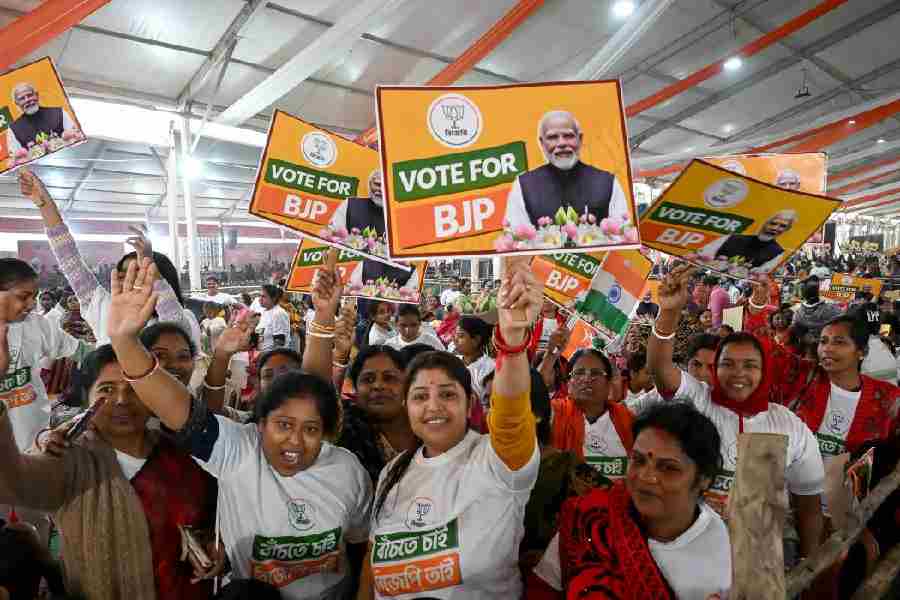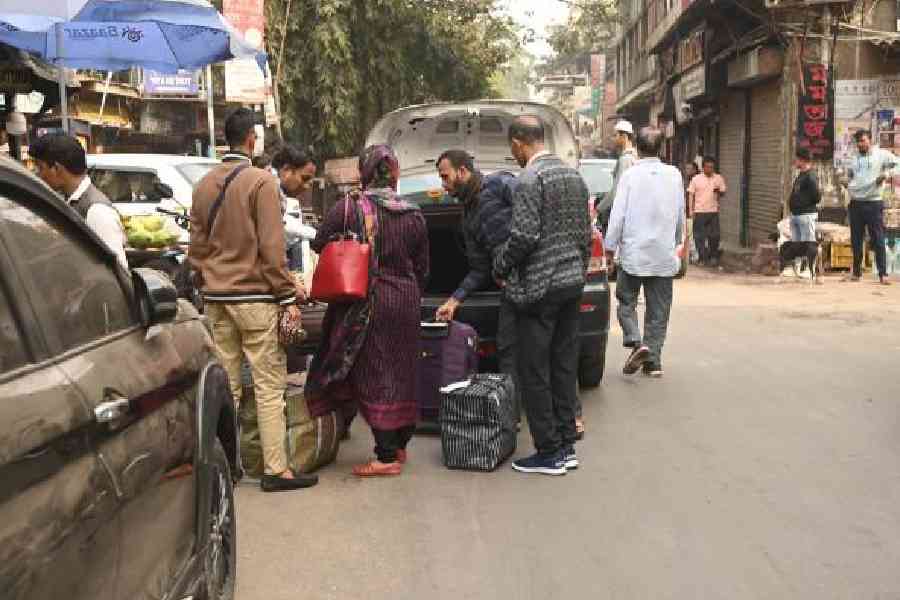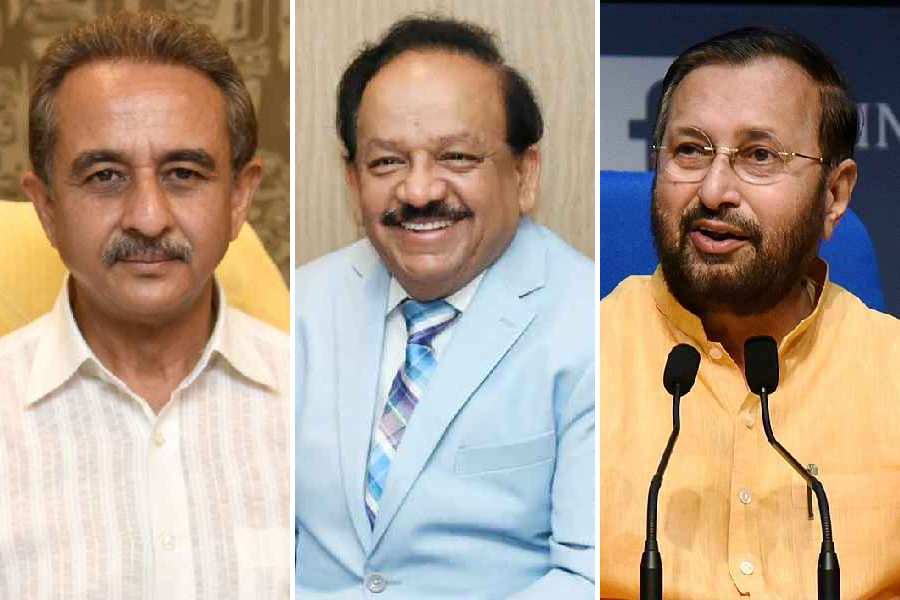 |
| Shubra Chadda’s Chumbak specialises in India-centric fridge magnets (left centre) and souvenirs steeped in local flavour Pix: Jagadeesh Nv |
Think out-of-the-box. Get a coffee-table with startling green parrots, pink flowers and a chessboard at its centre. Bring home Indian truck art in photo-frames and key-holders with slogans like Dil Ki Chabi and Horn OK Please on them. Or how about a T-shirt spewing a dialogue from Salman Khan’s Wanted: ‘Ek bar jo maine commitment kar di to main khud ki bhi nahi sunta’ or Dabangg-style ‘Bhaiya ji smile’. And since superstar Rajnikant’s everywhere, you must have a handbag that says ‘Rajnikant knows Victoria’s secret’.
They’re fun and out-and-out India-centric. From fridge magnets to your wardrobe, you can wear your Indianness on your sleeve like never before. For, every product designer worth his/her Rajni dialogue is drawing inspiration from market-scenes, Bollywood poster art and even the man on the street.
Shubra Chadda joined the fray in 2009 when she couldn’t find an India-centric fridge magnet. She launched Chumbak (magnet in Hindi) — a brand specialising in fridge magnets and other souvenirs steeped in Indian sights and sounds. Chadda, a Bangalore-based marketing executive-turned-entrepreneur, aims to capture India in a nutshell.
 |
 |
| Humour is the mainstay of Rajat Tuli (right) and Rahul Anand’s Happily Unmarried line of products. Pix:Jagan Negi |
 |
“The idea is to package India in a contemporary way that people can relate to,” says Chadda. Her magnets are colourful depictions of everyday scenes: a moustachioed paanwallah, his kiosk crammed with cigarettes, shampoo and even condoms; a chaiwallah pouring tea from one glass to the other and much more.
A slew of designers and entrepreneurs is cashing in on the growing demand for India-inspired products.
“Though it always existed at a grassroots level in the form of truck art and vivid colours/motifs used by craftsmen, today there’s a surge in Indian kitsch in high fashion and even home decor,” says Gunjan Khaitan of The Orange Bicycle, a lifestyle store in Bangalore.
Happily Unmarried, co-owned by Rajat Tuli and Rahul Anand, stocks products by various Indian designers, from a typical Indian dabba-inspired CD case to beer glasses printed with filmy lines. “These are aimed at Indians and foreigners who’ve lived here and understood the madness that’s India. About 85 per cent of our buyers are Indians,” says Tuli.
Khaitan, along with friend Leena Raizada and two other partners, laun-ched The Orange Bicycle six months ago offering brands like SODA, Pop Goes the Art, Tungs 10, Pop Att, Item Number, Tribal Truck Art, Masala Tees and Crazy Heart that all use Indian motifs.
While Masala Tees has T-shirts with names like Maya, Neena, Sitara on them, Pop Goes the Art stocks wall clocks and boxes with prints of Bollywood actors, maharajas and royals. Clocks, cushion covers and coasters from SODA are printed with old Hindi movie scenes. “The fact that we have over 80 brands from around the country and 70 per cent of them have Indian motifs shows how big the market is,” says Khaitan.
 |
 |
| Nidhi Singh and Gaurav Gupta, have gone green with their brand Indigreen and offer eco-friendly lines of bags, belts and slogan-bearing T-shirts |
Khaitan says an increasing number of entrepreneurs have turned their attention to Indian motifs as they feel Indians love local flavours that “belong” to them. “They no longer shy away from Bollywood inspired T-shirts or kitschy bags and are even doing up their homes with these,” he says.
Chadda, who launched Chumbak with illustrator Alicia Souza, was surprised when the first batch of magnets was a sell-out and orders for more poured in. Today, Chumbak has about 9,000 followers on Facebook and a huge range of products like notebooks, mousepads and even boxers for women selling briskly online at www.chumbak.in. They also retail out of 80 stores across India.
Meanwhile, Happily Unmarried has expanded to three stores in Delhi and added a franchise in Shillong. It supplies to over 60 stores in major metros and state capitals. Tuli receives five to seven portfolios of designers wanting to showcase their lines at the store. “But we pick suitable products and often improvise by adding quirky lines or dialogues,” says Tuli.
With 34,000 fans on Facebook, Happily Unmarried has also been getting online orders from countries like UK and UAE. Just log onto on www.happilyunmarried.com.
 |
 |
| Nida Mahmood of New India Bioscope Co. offers hand-painted Bollywood kitsch on everything from coasters (above) to chairs |
Fashion designer Nida Mahmood too has been taking time off from her season’s collections to create products. “‘Kitsch’ to me is reinventing and innovating art to create an original piece of art,” says Mahmood. The designer feels there’s much to Indian art but it’s not been tapped as yet. Her brand, New India Bioscope Co., has products with hand-painted dialogues on them. Take your pick of notebooks, coasters, matchboxes, umbrellas, T-shirts, trunk tables, chairs and floor lamps. There’s also the Gabbar Singh jacket and psychedelic metal boards with legendary lines — ‘Tera kya hoga Kaliya?’, ‘Basanti, in kutton ke saamne mat naachna…” and more.
Mahmood reinterprets old movie posters digitally before giving them to the poster artists, who handpaint these on jackets, trunks and lamps and even metal boards to make posters.
 |
 |
| Aarohi Singh hand-paints her products with typically Indian motifs and her tea kettles are a runaway hit Pix: Jagadeesh Nv |
Online stores too are cashing in on the demand for quirky India-inspired products. Bangalore artist-turned-entrepreneur Aarohi Singh sells her India flavoured products either through exhibitions or on her website www.artbyaarohi.com. Singh, a self-taught artist, first retailed her range of hand-painted kettles with Indian imagery at an exhibition in 2008. “We Indians can handle bright colours with ease,” says Singh. Her signature pro-duct, the ‘Singh is King’ kettle has a turbaned Sikh painted on it while the Kamasutra Kettle flaunts an embracing couple. Singh hand-paints these herself — chessboards on table-tops, buckets, cupboards, plates and trunks with Indian gods. Though she’s not mass producing yet, with demand from stores growing, she’s looking to increase production by hiring assistants.
Cut to Mumbai where fashion journalist-turned-entrepreneur Nidhi Singh and business partner, Gaurav Gupta, are designing bags, belts and T-shirts painted with eco-friendly colours and slogans that sometimes scream Bollywood dialogues. Their brand, Indigreen, has even transformed Bollywood movie names and dialogue into eco-friendly slogans like Green Deewar, and Mere Paas Dharti Maa Hai — all painted with eco-friendly paints. And a T-shirt slogan has a quirky take on the iconic Hindi film, Kagaz Ke Phool — Global warming ko jo gaya bhool to bachenge sirf kagaz ke phool. Their collections are not only popular among Indians but also with mad-about-Bollywood NRIs and foreigners.
But is this a passing fad or is it here to stay? “It’ll stay as it’s rooted in our culture and is contemporary and colourful,” says Khaitan. She feels the styles might change and the mediums vary but the underlying thread will stay.
Chadda adds that innovation is the key if the brands are to be kept alive. “As long as the creativity flows, India-inspired products will always find takers,” she says.










